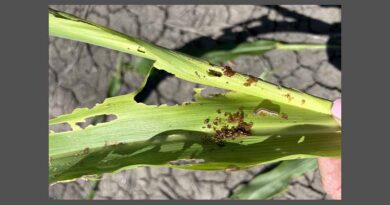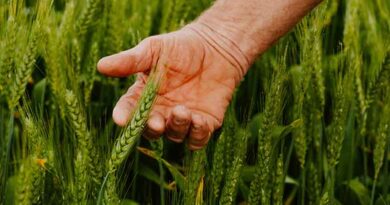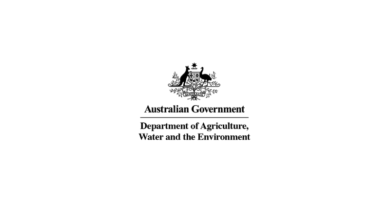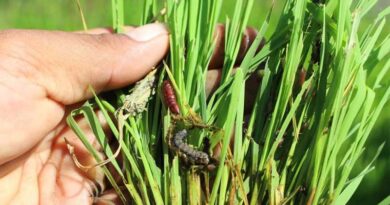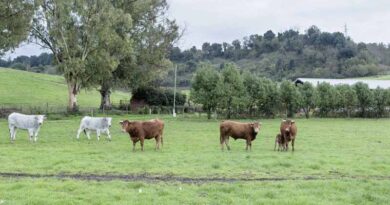Growers on alert for Fall armyworm
12 February 2024, AU: Fall armyworm (FAW) are being detected at unprecedented levels in sorghum crops across Central Queensland, the Western and Darling Downs and northern New South Wales causing what experts predict could be the most significant impact on sorghum since the pest’s arrival in Australia in 2020.
Queensland Department of Agriculture and Fisheries (DAF) principal entomologist Melina Miles urged growers to be alert, but not alarmed and take a considered approach to making decisions about the need for control.
“We know that FAW can be devastating and we’re seeing significant crop damage in southern and Central Queensland in sorghum,” Dr Miles says.
“We understand that the level of damage in crops this year is causing concern amongst growers, but I encourage them to work with their advisers to accurately assess FAW infestations before taking action.”
Dr Miles’ work is part of a GRDC and DAF research project aimed at developing FAW economic thresholds and management guidelines for sorghum and maize.
Dr Miles attributes the high activity this season to an early start to the FAW activity in spring resulting in higher summer populations.
“In many regions, rain in December has meant later crops, resulting in the coincidence of high FAW activity and susceptible crops. It is also possible that the weather systems associated with the recent cyclones has facilitated the movement of large FAW populations into central Queensland,” Dr Miles says.
“We’re in the early stages of developing robust management recommendations for this pest and research is ongoing, but what we do know is that FAW populations build up between October and March. Where they can, growers are adopting an early-sowing strategy to largely avoid severe damage, and this has been effective in 2021-23.
“This season we have late crops planted on the December rain. Because of that, more growers are seeing high FAW populations and damage in crops from emergence throughout the vegetative stages.
“Current information indicates that peak FAW numbers typically occur from mid-summer through autumn.” However, we saw high FAW activity as early as October this season and consequently there has been more time for the population to build up to higher levels.
Dr Miles says in order to decide whether an infestation warrants control, growers should assess the number and size of FAW larvae per plant. The only effective way to do this is to pull plants apart and unroll the whorl.
“Just looking at damage is risky as it doesn’t tell you what the damage potential is of the infestation over the next week or so.
“As with other caterpillar pests, like helicoverpa, the natural mortality of eggs and small larvae is high – possibly as high as 80 per cent, however, the mortality of larger larvae (4th – 6th instar) tends to be much lower, so you can assume most of the larger larvae you find will survive and cause damage.
“Over the past three seasons, once sorghum started to come into head FAW infestations have declined. However, this year we are seeing infestations persist into grain filling. There are instances of FAW damaging grain in the heads, but not to the same extent as a similar infestation of helicoverpa.
GRDC Northern Panel member and Emerald based agronomist Belinda Chase says the impact of FAW in Central Queensland has been heartbreaking.
“In the worst affected areas, we are seeing whole plant defoliation and have had observations of larvae then moving below ground and attacking the base of the stem,” Ms Chase says.
GRDC Biosecurity Manager Callum Fletcher says GRDC was aware of the impact FAW was having on northern crops and was committed to supporting growers through targeted research that would help inform management practices and identify options for more effective control.
“We understand this is an extremely challenging situation for grain growers and we’re working with our research partners to come up with tactics and solutions that will reduce the impact of FAW,” Mr Fletcher says.
“This current research project is focused on establishing and understanding Australian economic management thresholds for FAW in maize and sorghum.
“Most of the current information available on FAW comes from countries who manage infestations primarily through the development of genetically modified (GMO) crops.
“Australia does not have GMO sorghum or maize crops and is unlikely to do so in the near future, so growers are reliant on insecticides and biological control to manage FAW infestations in susceptible crops.
“This GRDC research aims to help growers manage FAW effectively and economically, without applying excessive selection pressure through the overuse of insecticides.”
For information about identification and registered chemical control options, growers should contact their local advisers and visit the GRDC Fall armyworm page.
Also Read: World Pulses Day 2024: Will India become self-sufficient in Pulses?
(For Latest Agriculture News & Updates, follow Krishak Jagat on Google News)



